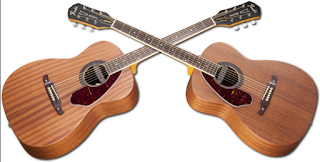Download The New Billboard top chart 100 . The Billboard Hot 100 is the music industry standard record chart for singles, published weekly by Billboard magazine. Chart rankings are based on radio play, online streaming, and sales (physical and digital).
The weekly sales period was originally Monday to Sunday when Nielsen started tracking sales in 1991, but since July 2015, this has been changed from Friday to Thursday. Radio airplay, which unlike sales figures and streaming data, is readily available on a real-time basis and is tracked on a Monday to Sunday cycle (it was previously Wednesday to Tuesday).A new chart is compiled and officially released to the public
1. Rihanna Featuring Drake - Work
2. Lukas Graham - 7 Years
3. Justin Bieber - Love Yourself
4. Flo Rida - My House
5. twenty one pilots - Stressed Out
6. Meghan Trainor - No
7. G-Eazy x Bebe Rexha - Me, Myself & I
8. Zayn - Pillowtalk
9. DNCE - Cake By The Ocean
10. Mike Posner - I Took A Pill In Ibiza 11. Justin Bieber - Sorry
12. Fifth Harmony Featuring Ty Dolla $ign - Work From Home
13. Ariana Grande - Dangerous Woman
14. Charlie Puth - One Call Away
15. Selena Gomez - Hands To Myself
16. The Chainsmokers Featuring Rozes - Roses
17. Zara Larsson & MNEK - Never Forget You
18. Kevin Gates - 2 Phones
19. Adele - Hello
20. DJ Snake Featuring Bipolar Sunshine - Middle
21. Desiigner - Panda
22. Shawn Mendes - Stitches
23. Bryson Tiller - Don't
24. Jeremih - Oui
25. Yo Gotti Featuring Nicki Minaj - Down In The DM
26. Bryson Tiller - Exchange
27. Drake & Future - Jumpman
28. The Weeknd - The Hills
29. Future Featuring The Weeknd - Low Life
30. Chris Brown - Back To Sleep
31. The Chainsmokers Featuring Daya - Don't Let Me Down
32. Cole Swindell - You Should Be Here
33. Drake - Summer Sixteen
34. Drake - Hotline Bling
35. James Bay - Let It Go
36. Troye Sivan - Youth
37. Justin Bieber - What Do You Mean?
38. Tory Lanez - Say It
39. Fetty Wap Featuring Remy Boyz - 679
40. Brett Eldredge - Drunk On Your Love
41. Meghan Trainor Featuring John Legend - Like I'm Gonna Lose You
42. Iggy Azalea - Team
43. Ariana Grande - Be Alright
44. Thomas Rhett - Die A Happy Man
45. Post Malone - White Iverson
46. Daya - Hide Away
47. Alessia Cara - Here
48. Selena Gomez - Same Old Love
49. Elle King - Ex's & Oh's
50. Adele - When We Were Young
51. Tim McGraw - Humble And Kind
52. The Weeknd - In The Night
53. Maren Morris - My Church
54. Dierks Bentley - Somewhere On A Beach
55. Florida Georgia Line - Confession
56. Rascal Flatts - I Like The Sound Of That
57. Chris Young Duet With Cassadee Pope - Think Of You
58. Alessia Cara - Wild Things
59. Kevin Gates - Really Really
60. Old Dominion - Snapback
61. Blake Shelton - Came Here To Forget
62. Taylor Swift - New Romantics
63. Robin Schulz Featuring Francesco Yates - Sugar
64. Rihanna - Needed Me
65. Young Thug - Best Friend
66. Justin Bieber - Company
67. Ruth B - Lost Boy
68. O.T. Genasis Featuring Young Dolph - Cut It
69. Disturbed - The Sound Of Silence
70. Kid Ink Featuring Fetty Wap - Promise
71. Sia Featuring Sean Paul - Cheap Thrills
72. Zac Brown Band - Beautiful Drug
73. The Weeknd - Acquainted
74. Thomas Rhett - T-Shirt
75. Carrie Underwood - Heartbeat
76. Coldplay - Adventure Of A Lifetime
77. Rachel Platten - Stand By You
78. Kelly Clarkson - Piece By Piece
79. Fetty Wap - Jimmy Choo
80. Gwen Stefani - Make Me Like You
81. Belly Featuring The Weeknd - Might Not
82. Chris Stapleton - Nobody To Blame
83. DJ Luke Nasty - Might Be
84. Dustin Lynch - Mind Reader
85. Chase Bryant - Little Bit Of You
86. Shakira - Try Everything
87. Ellie Goulding - Something In The Way You Move
88. Shawn Mendes & Camila Cabello - I Know What You Did Last Summer
89. Ty Dolla $ign Featuring E-40 - Saved
90. Lee Brice - That Don't Sound Like You
91. Luke Bryan Featuring Karen Fairchild - Home Alone Tonight
92. Jon Pardi - Head Over Boots
93. Zayn - Like I Would
94. Granger Smith - Backroad Song
95. Major Lazer Featuring Nyla - Light It Up
96. twenty one pilots - Ride
97. Zendaya Featuring Chris Brown - Something New
98. Dreezy Featuring Jeremih - Body
99. Bryson Tiller - Sorry Not Sorry
100. Jonas Blue Featuring Dakota
Download The New Billboard top chart 100.
Download Here
The weekly sales period was originally Monday to Sunday when Nielsen started tracking sales in 1991, but since July 2015, this has been changed from Friday to Thursday. Radio airplay, which unlike sales figures and streaming data, is readily available on a real-time basis and is tracked on a Monday to Sunday cycle (it was previously Wednesday to Tuesday).A new chart is compiled and officially released to the public
The new Billboard top chart 100 in 2016
2. Lukas Graham - 7 Years
3. Justin Bieber - Love Yourself
4. Flo Rida - My House
5. twenty one pilots - Stressed Out
6. Meghan Trainor - No
7. G-Eazy x Bebe Rexha - Me, Myself & I
8. Zayn - Pillowtalk
9. DNCE - Cake By The Ocean
10. Mike Posner - I Took A Pill In Ibiza 11. Justin Bieber - Sorry
12. Fifth Harmony Featuring Ty Dolla $ign - Work From Home
13. Ariana Grande - Dangerous Woman
14. Charlie Puth - One Call Away
15. Selena Gomez - Hands To Myself
16. The Chainsmokers Featuring Rozes - Roses
17. Zara Larsson & MNEK - Never Forget You
18. Kevin Gates - 2 Phones
19. Adele - Hello
20. DJ Snake Featuring Bipolar Sunshine - Middle
21. Desiigner - Panda
22. Shawn Mendes - Stitches
23. Bryson Tiller - Don't
24. Jeremih - Oui
25. Yo Gotti Featuring Nicki Minaj - Down In The DM
26. Bryson Tiller - Exchange
27. Drake & Future - Jumpman
28. The Weeknd - The Hills
29. Future Featuring The Weeknd - Low Life
30. Chris Brown - Back To Sleep
31. The Chainsmokers Featuring Daya - Don't Let Me Down
32. Cole Swindell - You Should Be Here
33. Drake - Summer Sixteen
34. Drake - Hotline Bling
35. James Bay - Let It Go
36. Troye Sivan - Youth
37. Justin Bieber - What Do You Mean?
38. Tory Lanez - Say It
39. Fetty Wap Featuring Remy Boyz - 679
40. Brett Eldredge - Drunk On Your Love
41. Meghan Trainor Featuring John Legend - Like I'm Gonna Lose You
42. Iggy Azalea - Team
43. Ariana Grande - Be Alright
44. Thomas Rhett - Die A Happy Man
45. Post Malone - White Iverson
46. Daya - Hide Away
47. Alessia Cara - Here
48. Selena Gomez - Same Old Love
49. Elle King - Ex's & Oh's
50. Adele - When We Were Young
51. Tim McGraw - Humble And Kind
52. The Weeknd - In The Night
53. Maren Morris - My Church
54. Dierks Bentley - Somewhere On A Beach
55. Florida Georgia Line - Confession
56. Rascal Flatts - I Like The Sound Of That
57. Chris Young Duet With Cassadee Pope - Think Of You
58. Alessia Cara - Wild Things
59. Kevin Gates - Really Really
60. Old Dominion - Snapback
61. Blake Shelton - Came Here To Forget
62. Taylor Swift - New Romantics
63. Robin Schulz Featuring Francesco Yates - Sugar
64. Rihanna - Needed Me
65. Young Thug - Best Friend
66. Justin Bieber - Company
67. Ruth B - Lost Boy
68. O.T. Genasis Featuring Young Dolph - Cut It
69. Disturbed - The Sound Of Silence
70. Kid Ink Featuring Fetty Wap - Promise
71. Sia Featuring Sean Paul - Cheap Thrills
72. Zac Brown Band - Beautiful Drug
73. The Weeknd - Acquainted
74. Thomas Rhett - T-Shirt
75. Carrie Underwood - Heartbeat
76. Coldplay - Adventure Of A Lifetime
77. Rachel Platten - Stand By You
78. Kelly Clarkson - Piece By Piece
79. Fetty Wap - Jimmy Choo
80. Gwen Stefani - Make Me Like You
81. Belly Featuring The Weeknd - Might Not
82. Chris Stapleton - Nobody To Blame
83. DJ Luke Nasty - Might Be
84. Dustin Lynch - Mind Reader
85. Chase Bryant - Little Bit Of You
86. Shakira - Try Everything
87. Ellie Goulding - Something In The Way You Move
88. Shawn Mendes & Camila Cabello - I Know What You Did Last Summer
89. Ty Dolla $ign Featuring E-40 - Saved
90. Lee Brice - That Don't Sound Like You
91. Luke Bryan Featuring Karen Fairchild - Home Alone Tonight
92. Jon Pardi - Head Over Boots
93. Zayn - Like I Would
94. Granger Smith - Backroad Song
95. Major Lazer Featuring Nyla - Light It Up
96. twenty one pilots - Ride
97. Zendaya Featuring Chris Brown - Something New
98. Dreezy Featuring Jeremih - Body
99. Bryson Tiller - Sorry Not Sorry
100. Jonas Blue Featuring Dakota
Download The New Billboard top chart 100.
Download Here















